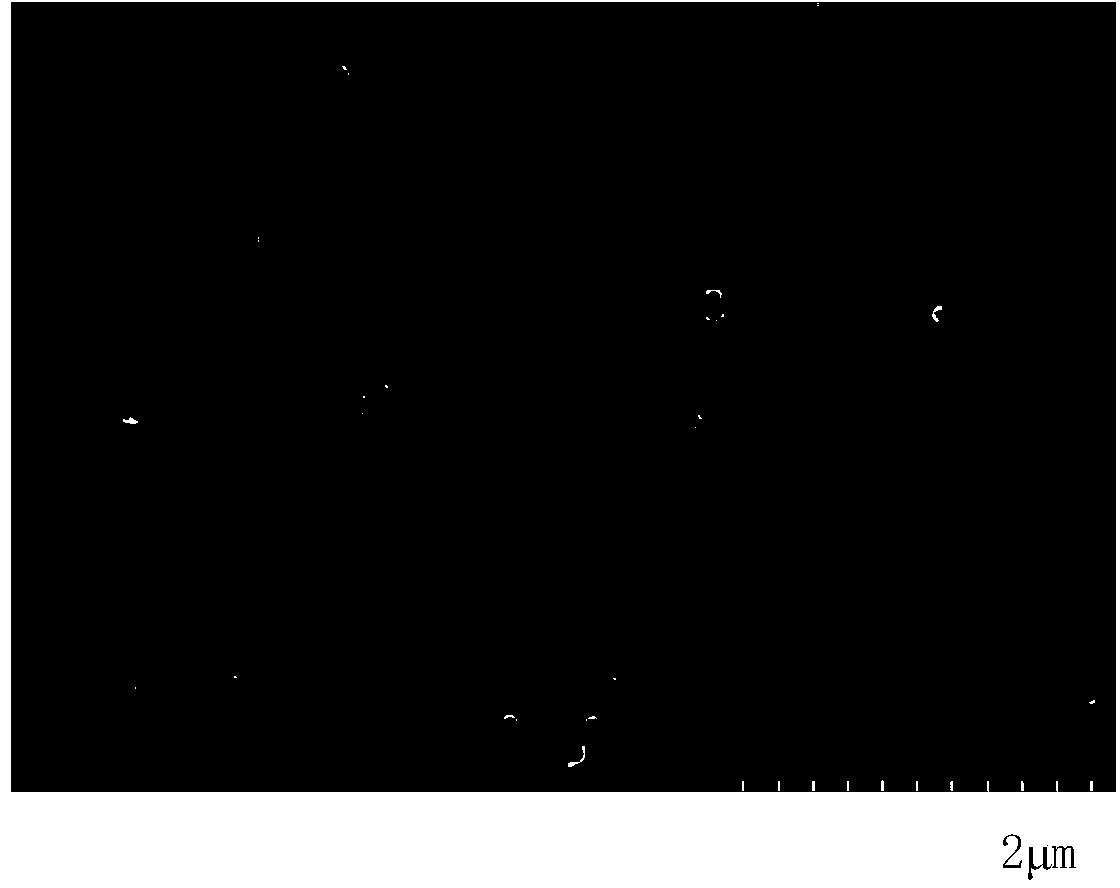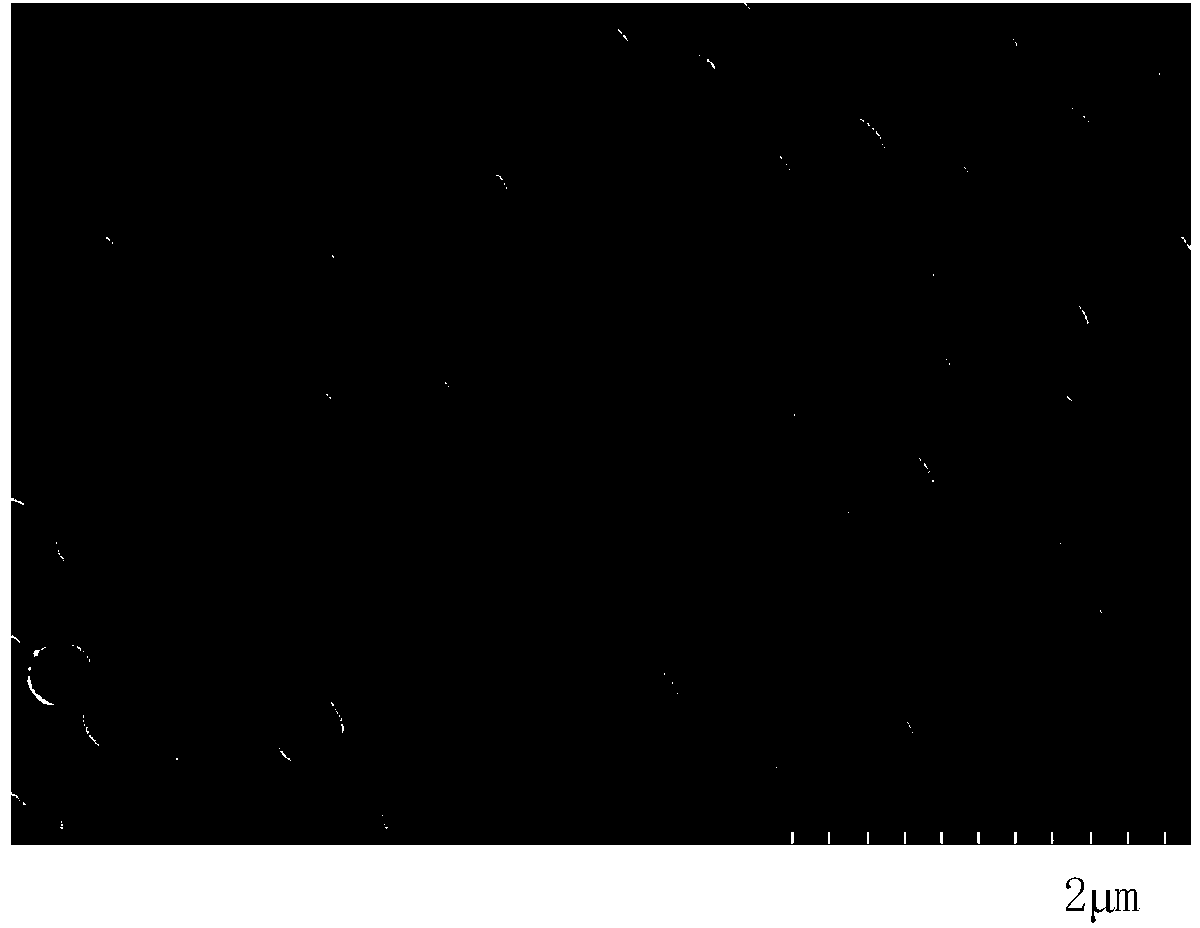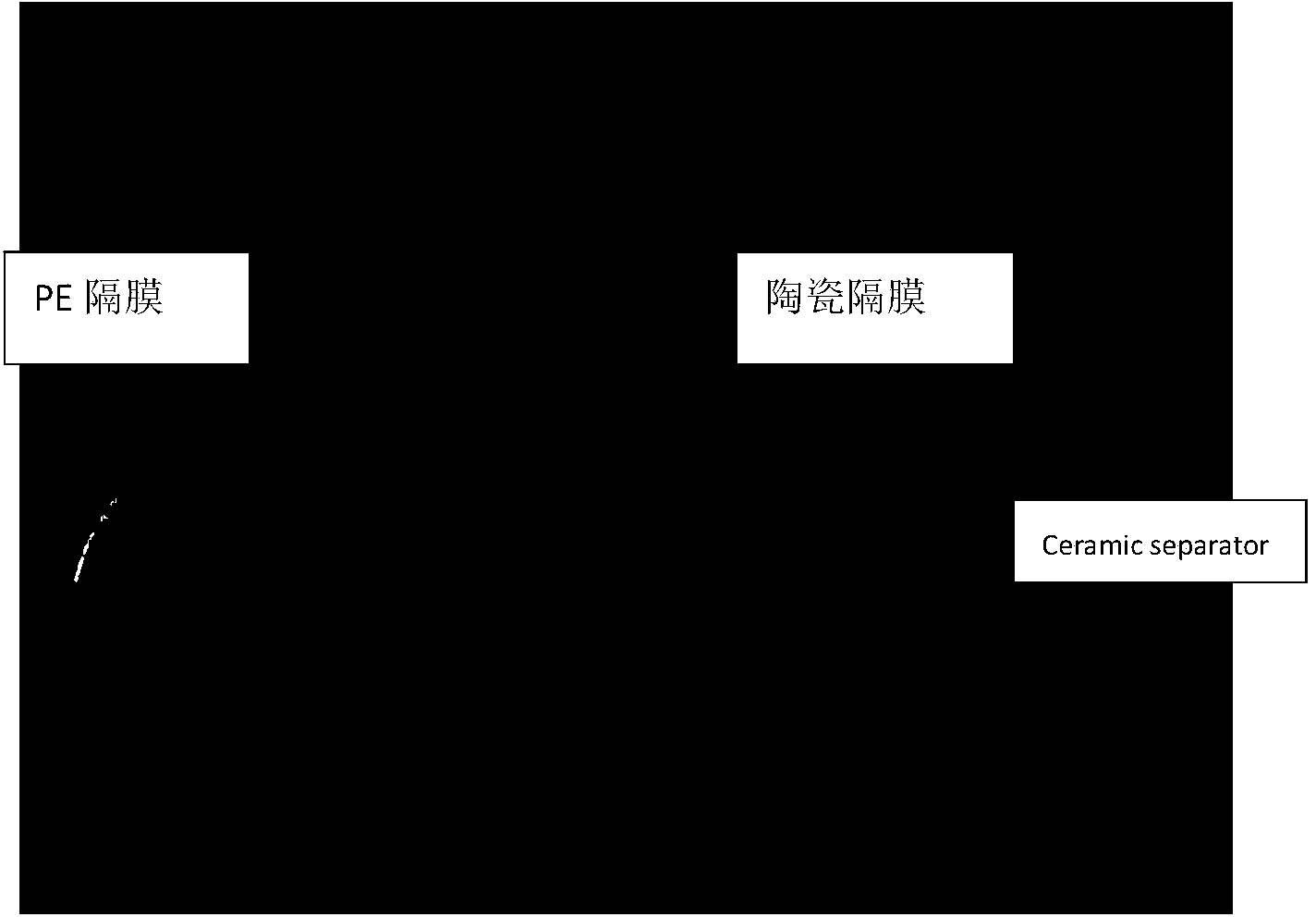Composite diaphragm as well as preparation method and application thereof
A composite diaphragm and diaphragm material technology, applied in the field of lithium-ion batteries, can solve the problems of increasing the manufacturing cost of ceramic diaphragms, high toxicity of organic solvents, flammable and volatile safety, etc.
- Summary
- Abstract
- Description
- Claims
- Application Information
AI Technical Summary
Problems solved by technology
Method used
Image
Examples
Embodiment 1
[0053] The mass ratio of the synthesized alumina nanoparticles to sodium carboxymethylcellulose (CMC) and styrene-butadiene rubber (SBR) is 95:2:3 mixed powder 1g, put into deionized water and acetone (3:1, v : v) Mix 10ml of solution, ball mill the obtained ceramic slurry overnight, ultrasonically disperse the mixed slurry for 20min, and apply diaphragm coating to the obtained slurry. The ceramic diaphragm is made of ordinary polyethylene (PE) diaphragm as the diaphragm base material. The resulting slurry is uniformly coated on one or both sides of a common polyethylene (PE) separator. Preheat at 60°C with an electric heating plate, wait for most of the solvent to volatilize, and dry in a vacuum oven at 60°C overnight to completely remove the solvent and obtain a modified ceramic diaphragm.
[0054] figure 1 The scanning electron microscope photograph of the composite diaphragm with alumina as the inorganic powder is obtained. It can be clearly observed from the photograph ...
Embodiment 2
[0056] Mix 1 g of the synthesized silica nanoparticles and polyacrylate terpolymer latex (LA132) in a mass ratio of 90:4:6, and put a mixed solvent of deionized water and ethanol solvent (3:1, v:v) 15ml, the obtained ceramic slurry was ball-milled overnight, and the mixed slurry was ultrasonically dispersed for 30 minutes, and the obtained slurry was subjected to diaphragm coating. The ceramic diaphragm is made of ordinary polypropylene (PP) diaphragm as the diaphragm base material. The resulting slurry is uniformly coated on one or both sides of a common polyethylene (PP) separator. Preheat at 60°C with an electric heating plate, wait for most of the solvent to volatilize, and dry in a vacuum oven at 60°C overnight to completely remove the solvent and obtain a modified ceramic diaphragm.
[0057] figure 2 The scanning electron microscope photographs of the obtained composite diaphragm with silicon oxide as inorganic powder, it can be clearly observed from the photograph th...
Embodiment 3
[0060] Mix 1 g of the synthesized magnesium oxide nanoparticles and polyacrylate terpolymer latex (LA133) in a mass ratio of 85:6:9, put in deionized water and acetone (3:1, v:v ) with 20 ml of mixed solvent, ball-mill the obtained ceramic slurry overnight, ultrasonically disperse the mixed slurry for 40 min, and apply the obtained slurry to diaphragm coating. The ceramic diaphragm is made of polyvinylidene fluoride (PVDF) diaphragm as the diaphragm substrate. The resulting slurry is evenly coated on one or both sides of a polyvinylidene fluoride (PVDF) diaphragm. Preheat at 60°C with an electric heating plate, wait for most of the solvent to volatilize, and dry in a vacuum oven at 60°C overnight to completely remove the solvent and obtain a modified ceramic diaphragm.
[0061] The heat shrinkage figure before and after heat shrinkage of the composite diaphragm of embodiment 3 is shown in Figure 4 and 5 .
PUM
| Property | Measurement | Unit |
|---|---|---|
| Thickness | aaaaa | aaaaa |
Abstract
Description
Claims
Application Information
 Login to View More
Login to View More - R&D
- Intellectual Property
- Life Sciences
- Materials
- Tech Scout
- Unparalleled Data Quality
- Higher Quality Content
- 60% Fewer Hallucinations
Browse by: Latest US Patents, China's latest patents, Technical Efficacy Thesaurus, Application Domain, Technology Topic, Popular Technical Reports.
© 2025 PatSnap. All rights reserved.Legal|Privacy policy|Modern Slavery Act Transparency Statement|Sitemap|About US| Contact US: help@patsnap.com



